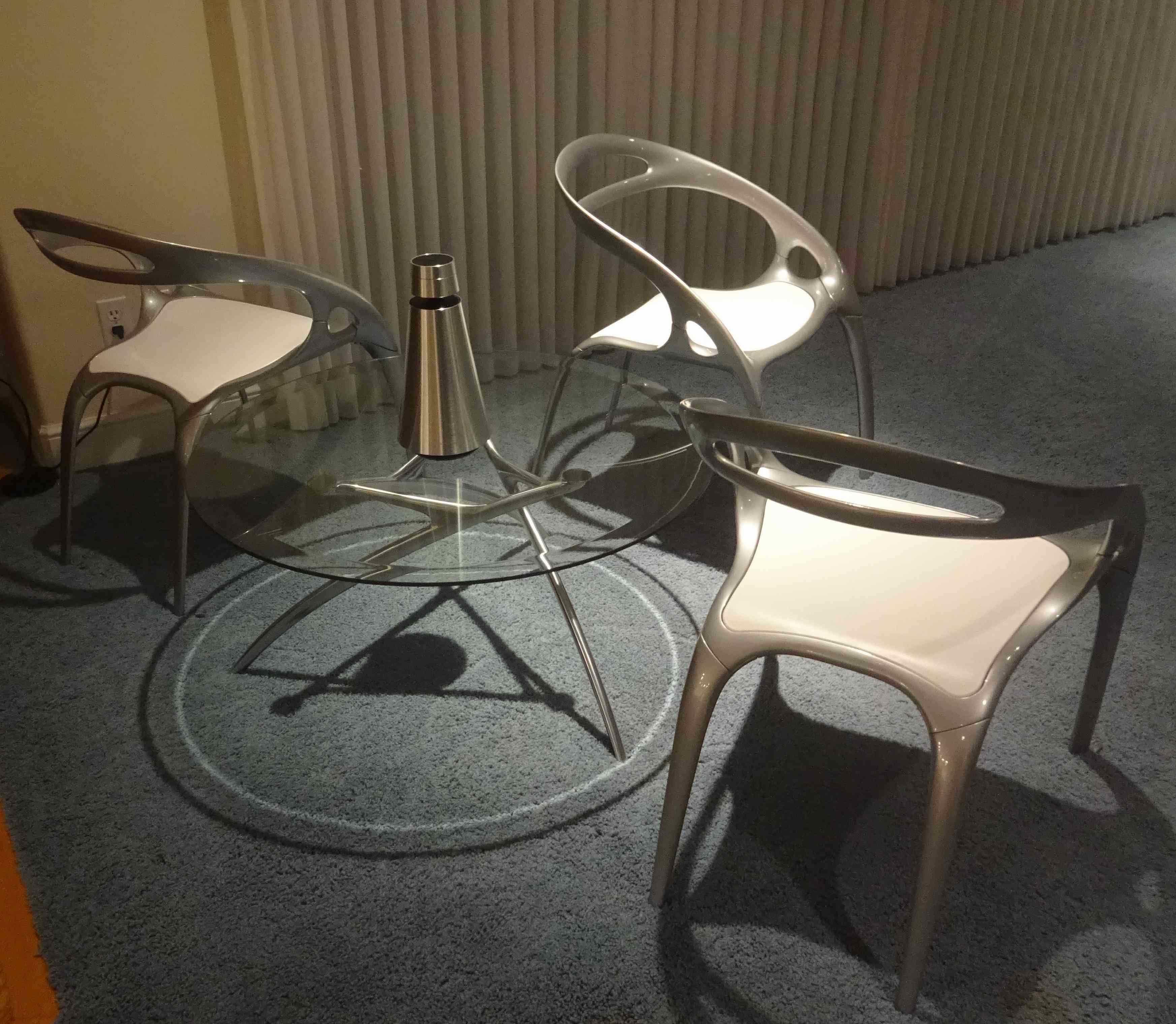Forum Replies Created
- AuthorPosts
-
Use single number keys 0-9 to go to radio station presets. Use the GOTO button to type in tuning with number keys. GOTO then TURN switches AM/FM. There’s search mode, too, with << and >> buttons. You may find the Beocenter 9500 manual helpful because it describes using the older Beolink rather than the special Beolink 7000, which is what the Beosystem 7000 manuals describe.
To sort through the files on your Mac and select one to play, the all-Apple old-school AirPlay streaming method is to run iTunes (older Mac) or Music.app (newer MacOS), and run Apple’s “Remote” iOS app on an iPad or iPhone to view the library and control the Mac from your armchair. Or run Apple Music on the iOS device itself if you don’t have a personal library. A typical hi-res alternative is to buy a Roon subscription and run the controller on your Mac, both to serve up your own hi-res files or to shoot out Tidal HiFi. You can get the trial version of Roon just to look at its very nice diagnostic display of the bitrates it’s using in your setup!
Yes, AirPlay2 works through a wired network. Yes, AirPlay2 has a limitation on high-res: 48K/24-bit seems to be what is generally quoted, although in theory it should support 192K/24-bit. Apple is intentionally vague on what bitrate gets negotiated when you send a hi-res stream to the HomePod, but it appears that *everything* is resampled into AAC 256K. You won’t be able to tell the difference with that speaker anyway. See here: https://discussions.apple.com/thread/252848734 and here, for the fog: https://www.audiosciencereview.com/forum/index.php?threads/does-airplay-2-support-high-resolution-audio.4629/ . Fog dispelling attempt here: https://techobsessed.net/2021/06/apple-music-lossless-and-airplay-dont-work-like-you-think-they-should/
No, going wired versus wireless doesn’t increase the bit rates that are negotiated inside the AirPlay protocols. What it does do is overcome the inherent failings of multi-room AirPlay, where all the speakers are checked for lag time and given timing instructions along with the data. For me, in a residence where more than 4 rooms have speakers, and a moderately out-of-date Wi-Fi access point (Apple AirPort Extreme 5 gen) the bandwidth required and the inevitable dropouts from wireless hits in a crowded environment make multi-room playback unusable. Turning the volume dial on the top of a BeoSound 1 while playing to (e.g.) 2 BS1s and 2 HomePods is super slow to get back to the Mac. Two rooms, works perfect; three rooms, usually OK; four rooms periodic “traveling room” shifting dropouts and lags; 5 rooms forget it. But YMMV.
The Beosound 1 (2nd gen) waiting with its Doc Ock friends to go outdoors onto the deck:

(The chairs are by Bernhardt, Ross Lovegrove’s “Go”. The table is by Ekkornes, their “Enigma”. Also, no-cables isn’t just the usual Danish conceit — notice the charging pad lurking on the floor!)
2) They probably want to sell you a new wall bracket from STB. Bottom of the page, here:
If you describe how the sound varies it might help diagnose. Is it “wow”, i.e. frequency change up&down, “flutter”, i.e. rapid tone or volume changes, “thinning” i.e. certain frequency ranges but not others fading out, or additional non-recorded sounds added to the mix?
Warped records might cause frequency changes, but it is usually small. Big warping sounds will be bumps or skips from the cartridge bottoming out. Vertical tracking angle changes can cause the sound to change, but it’s not so obvious. An off-center hole in the record pressing is more likely to cause wow, but is also easily visible from above looking at the tone arm wobble in and out.
At this age and with multiple new records, I would bet on mechanical failure of some kind rather than merely warped vinyl, but hopefully an expert on RX2 restoration will chime in if there exists some obvious failing…
- AuthorPosts
